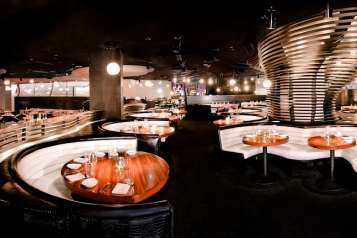
Forget art openings; they’re way too mainstream these days. You have to head to the artists’ studio instead!
One always thinks that the most difficult events to access are the art openings. Yet from an insider’s point of view I can tell you that all the big dogs are not at these soirées. They are wearing their trainers at the artist’s studio instead. They do not want to waste their time with freeloaders, but rather want to discuss works with artists directly.
My first magical studio visit was to Jackson Pollock’s in the Hamptons. Pollock used his dripping technique to transfer paint directly from pot to the canvases he had laid on the floor of his studio. The process was intense and agitated; the paint would fall as much on the canvas as on his studio flooring. And here I was, recognizing my favorite of his works from the Museum of Modern Art (MOMA) and the Los Angeles County Museum of Art (LACMA) – directly from the marks of his studio.
Magic.
Studios are also the best way to judge the vision, work ethic and passion of an artist. The more passionate an artist is, the better. The studio of a passionate artist can be seen in every detail: The number of creative attempts, the diversity of materials, the creative messiness. It’s almost the exact opposite to an opening in a white cube gallery because the mess here takes on value, as every element of it becomes a step towards understanding the work and artist better. The messier the studio, as it often turns it out, the better the artist. It becomes representative of his / her complex creative processes. You can see this in the studios of all the artists that we manage at MTArt.

The studio of artist Tristan Pigott is a show in itself. From the images he took at a museum show and painted on… To his yellow parrot flying around… To decomposing banana skins that he is moulding… To his painted computer keyboard… You just know that his new works will be exciting. Seeing and understanding creative processes doesn’t destroy the magic of the art; if anything it instead builds your anticipation of it and ensures that you can appreciate it even more greatly afterwards. Instead of simply seeing their art you get a chance to see the sacrifices that go into developing the final outcome.
What I really like about visiting artist studios is that you can make up your mind away from the persistent gallery sales assistant. You can take the time to compare the works, decide on the work that best fits what you’re looking for, and you can ask questions to the artist directly. This becomes the best deal, not only because of the studio pricing, but also because you can see whether or not the work is truly strong when you are away from the shiny spotlights. There is no lying in an artist’s studio. The works have to stand for themselves without champagne or forced lighting to help them.
They just have to be great.
Think about your future dinner conversations – isn’t it better to be knowledgeable with a good story from the studio when discussing the artwork you just acquired?
I would endlessly bid on the tiny studios of the biggest artists of our times if it were an option. Imagine owning The Factory of Andy Warhol – every thought, creative energy, debate and laugh is still there! I call this a diamond of inspiration.




















